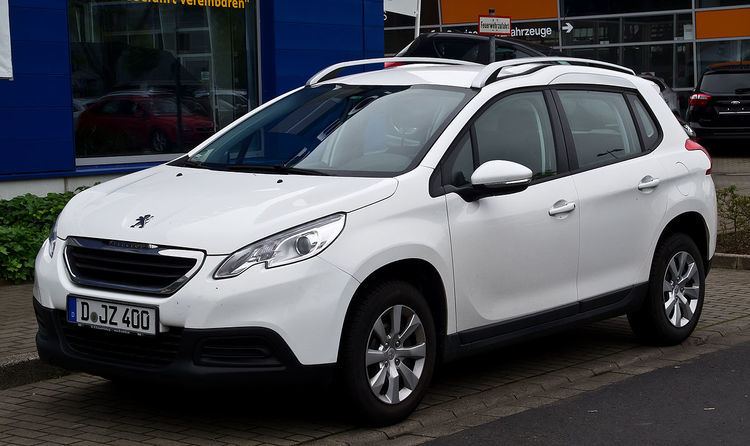 | ||
A crossover or crossover utility vehicle (CUV), is a vehicle built on a car platform and combining, in highly variable degrees, features of a sport utility vehicle (SUV) with features from a passenger vehicle, especially those of a station wagon or hatchback.
Contents
Using the unibody construction typical of passenger vehicles instead of the body-on-frame platform used in light trucks and the original SUVs, the crossover combines SUV design features such as tall interior packaging, high H-point seating, high center of gravity, high ground-clearance or all-wheel-drive capability – with design features from an automobile such as a passenger vehicle's platform, independent rear suspension, car-like handling, lighter weight and better fuel economy than trucks or truck-based vehicles.
A crossover may borrow features from a station wagon or hatchback, such as the two-box design of a shared passenger/cargo volume with rear access via a third or fifth door, a liftgate – and flexibility to allow configurations that favor either passenger or cargo volume, e.g., fold-down rear seats.
Crossovers are offered with front wheel drive, rear wheel drive or all-wheel drive configurations. Crossovers are typically designed for only light off-road capability, if any at all.
Origin
Sources indicate the term crossover began as a marketing term, and a 2008 CNNMoney article indicated that "many consumers cannot tell the difference between an SUV and a crossover." A January 2008 Wall Street Journal blog article called crossovers "wagons that look like sport utility vehicles, but ride like cars."
Though crossovers have become a defined market in recent years, they are not a new concept. The 1948 Willys-Overland Jeepster convertible coupe offered many of the features that define the modern crossover. In 1955, the Russian GAZ-M20 Pobeda was modified into the M-72 version to become the first all-wheel drive car unibody. A concept car using a Jeep Wagoneer (SJ) drivetrain was designed by Georgios Michael, and four vehicles were made by Neorion. The Russian off-road Vaz 2121 Niva was introduced in 1976 featuring a unibody body and some mechanical components from the VAZ-2101 compact sedan, the Fiat 124-based Lada.
A more direct crossover antecedent is the AMC Eagle, a passenger road vehicle introduced in 1979 that "pioneered the crossover SUV" category. As a precursor to today's crossover models, AMC's "vehicles worked well and sold well" and the "surviving Eagles look like the 'early man' version of a CUV, sort of a missing link of the car world."
The current use of the term for this market segment spans a wide range of vehicles. In some cases, manufacturers have marketed vehicles as crossovers simply to avoid calling them station wagons, or have produced crossovers mainly because station wagons have fallen out of favor with buyers in a particular region such as the United States.
While crossover vehicles released in the early-2000s resembled traditional SUVs or wagons, others have prioritized sportiness over utility – such as the Infiniti FX and BMW X6.
By 2006, the segment came into strong visibility in the U.S., when crossover sales "made up more than 50% of the overall SUV market." Sales increased in 2007 by 16%. For Audi, the Audi Q5 has become their second best-selling vehicle in the United States market after the Audi A4 sedan. Around half of Lexus' sales volume come from its SUVs since the late 1990s, the big majority of which is the Lexus RX crossover.
In the U.S., domestic manufacturers were slow to switch from their emphasis on light truck-based SUVs, and foreign automakers developed crossovers targeting the U.S. market, as an alternative to station wagons that are unpopular there. But by the 2010 model year, domestic automakers had quickly caught up. The segment has strong appeal to aging baby boomers.
Examples
The term crossover and SUV are sometimes interchangeable, sometimes used in combination, depending on the marketing or public perception of a particular vehicle. The broad spectrum of crossovers includes, among many others that are marketed in various markets:
The European MPV or large MPV may broadly resemble the crossover, including vehicles such as the Mercedes-Benz R-Class, and Ford S-Max. During the development of the Dodge Journey (Fiat Freemont), Dodge benchmarked several European vehicles.
Current crossovers with their platform genealogy (similar vehicles are grouped together):
